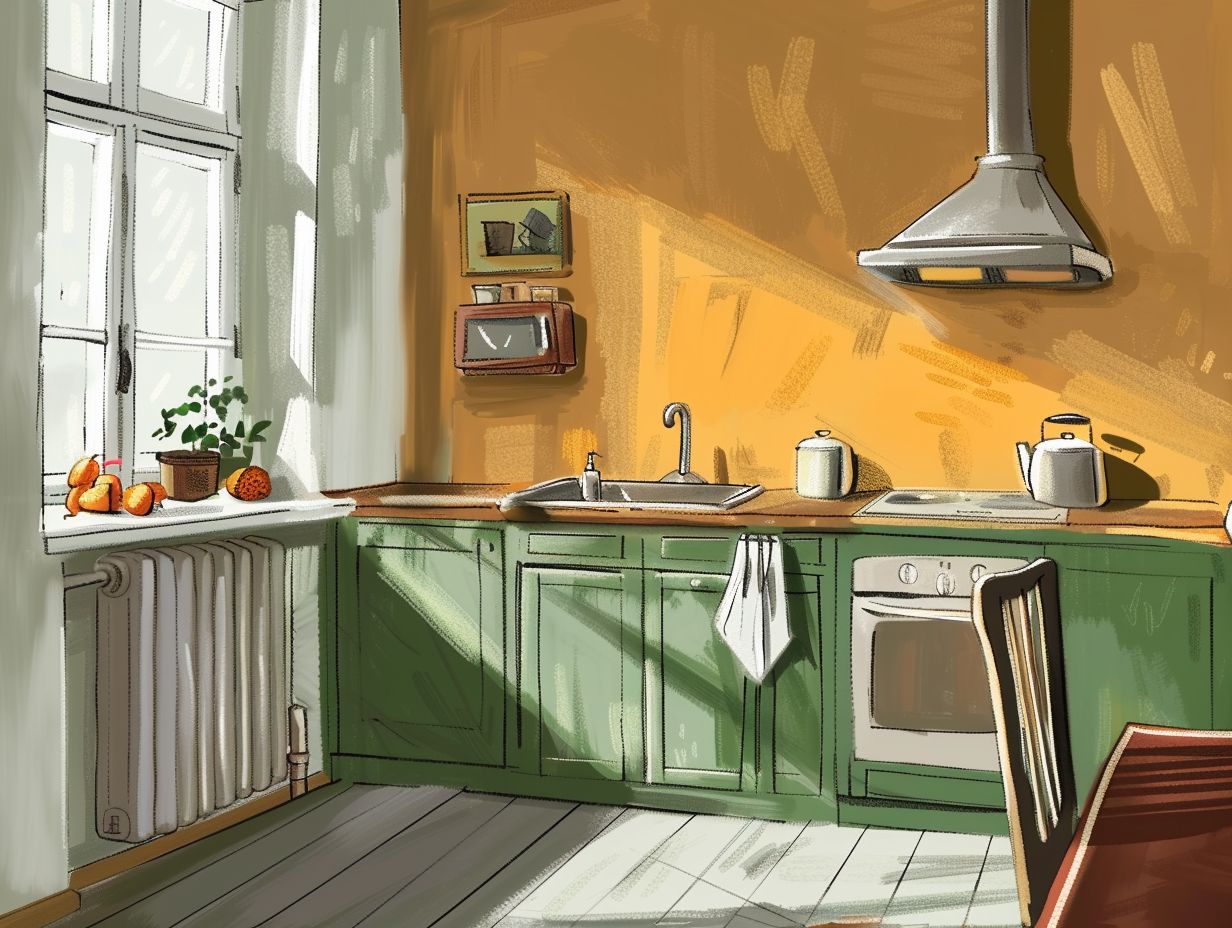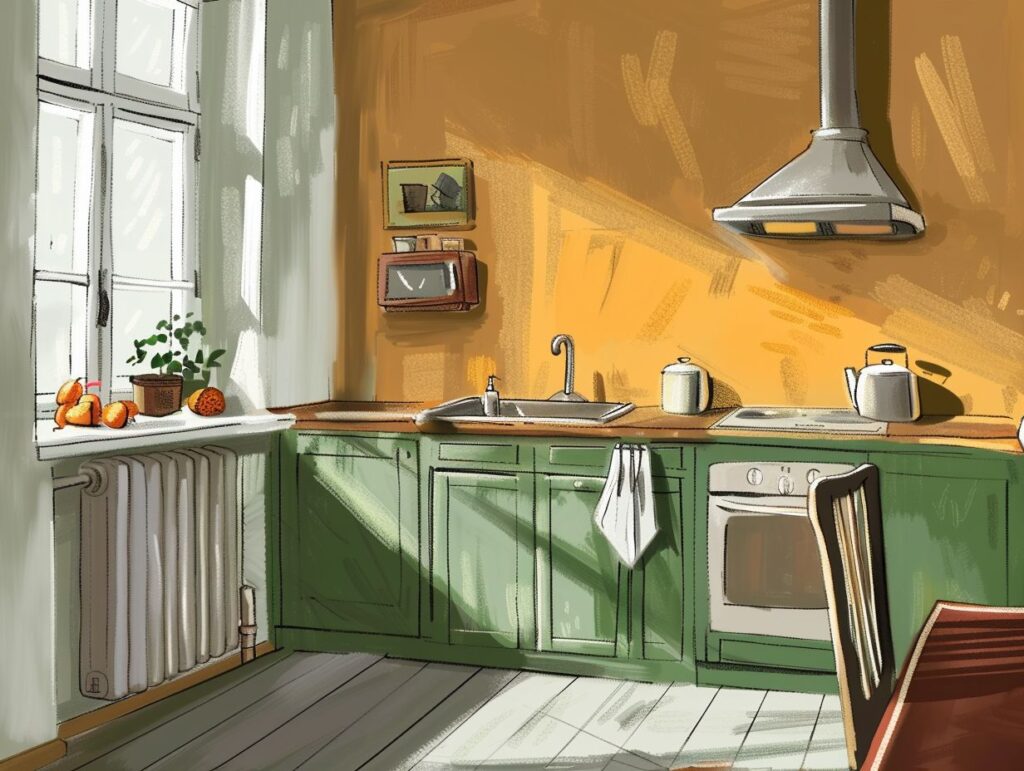Kitchen radiators are an essential component of your kitchen, offering warmth and comfort during colder periods. It is imperative to guarantee that these radiators are adequately earthed to mitigate any potential hazards or risks.
Understand the significance of earthing kitchen radiators, how to verify if your radiator is properly earthed, the consequences of neglecting earthing, and the step-by-step process for earthing your radiator. Additionally, we will present other safety precautions for secure usage and maintenance.
Enhance your knowledge on maintaining a safe and cosy kitchen environment!
Key Takeaways:

- Kitchen radiators must be earthed to prevent potential hazards and dangers.
- You can easily check if your kitchen radiator is earthed by performing simple tests and looking for indicators.
- It is important to regularly maintain and earth your kitchen radiator to ensure safe usage.
The Importance of Earthing Kitchen Radiators
The importance of earthing kitchen radiators cannot be overstated when it comes to ensuring the safety of individuals within a household. Proper earthing mechanisms, such as protective equipotential bonding and secure connections to the main earthing terminal, are critical for mitigating the risks associated with electrical faults and preventing electric shock hazards.
Protective equipotential bonding is a method that ensures all exposed metallic parts of an electrical installation are at the same electrical potential, reducing the likelihood of electric shock incidents.
By earthing kitchen radiators, fault currents are effectively redirected safely into the earth rather than posing a threat to occupants. This interconnected system plays a vital role in maintaining a safe environment within a home, as it establishes a reliable path for electricity to follow, ultimately protecting individuals from potential harm.
What is Earthing and Why is it Important?
Earthing is a crucial safety measure in electrical installations that involves linking conductive components, such as metallic pipes and exposed-conductive-parts, to the earth to prevent the build-up of hazardous voltages. This practice is essential for mitigating the risk of electric shock by safely redirecting fault currents.
When you earth metallic pipes, any inadvertent electrical charges can disperse harmlessly into the earth, minimising the risk of electric shock. Properly earthing exposed-conductive-parts, such as metal enclosures, enhances safety by establishing a low-resistance path for fault current, enabling protective devices like circuit breakers to function effectively.
Connecting extraneous-conductive-part components, like the metal frames of electrical equipment, to the earthing system helps maintain a consistent potential, decreasing the probability of transient voltage surges.
How to Check if Your Kitchen Radiator is Earthed?

Ensuring that your kitchen radiator is earthed is a crucial step in maintaining electrical safety in your home. Conducting simple tests and visual inspections, such as verifying the presence of a protective bonding conductor and examining connections near metallic doors or raised access floors, can help confirm proper earthing.
One important aspect to consider during the inspection process is confirming that the protective bonding conductor is intact and properly connected to the earth terminal. This conductor plays a crucial role in safely dissipating any stray currents.
Homeowners should remain vigilant for visible signs of corrosion or damage on metal components near the radiator, as these may indicate potential issues with the earthing system.
By proactively taking these preventive measures and conducting regular checks, you can significantly decrease the risk of electrical hazards in your kitchen and improve the overall safety of your home.
Simple Tests and Indicators
Homeowners like yourself rely on Simple Tests and Indicators as essential tools for assessing the efficiency and safety of the earthing system for kitchen radiators. It is crucial for you to conduct tests to check the continuity of the protective conductor and inspect for potential electric shock hazards near metallic parts.
You can easily perform these simple tests using a multimeter to measure the resistance between the radiator and the earth connection point. If the resistance falls within the acceptable range, it indicates a well-functioning earthing system. Additionally, you should visually inspect metallic parts for any signs of damage or wear that could compromise safety.
Identifying and promptly addressing these risks is imperative to prevent accidents and ensure a secure environment within the kitchen area.
The Risks of Not Earthing Kitchen Radiators
Neglecting the Earthing of Kitchen Radiators poses significant risks to you and your household occupants, primarily in terms of potential electric shock hazards. Without adequate earthing measures, exposed-conductive-parts can become live, increasing the likelihood of dangerous situations and compromising your safety.
In case of an electric shock incident caused by improper earthing, the consequences can be severe, ranging from minor injuries to fatalities. When your kitchen radiators lack proper earthing, the risk of electric shocks through direct contact or accidental contact with conducting parts escalates.
This is why the main protective bonding plays a crucial role in safeguarding against such hazards, ensuring that any potential fault currents are directed safely to the earth rather than flowing through the human body.
Adequate earthing not only protects against electric shock but also prevents damage to electrical appliances and reduces fire hazards.
Potential Hazards and Dangers
Understanding the potential hazards and dangers of inadequate earthing for kitchen radiators is crucial for maintaining a safe living environment. Exposed metal components, conductive parts, and connections near suspended ceilings can present severe risks if not properly earthed.
Without proper earthing, the metal elements in your kitchen radiators could become hazardous due to the risk of electric shock. When these elements are left exposed without a proper earthing connection, there is a high potential for accidental electrocution or fires.
In spaces with suspended ceilings, the lack of adequate grounding for electrical components can lead to short circuits, fires, and other serious safety issues. It’s essential to ensure that all electrical installations are properly earthed to minimise these potential dangers and protect both your property and your well-being.
How to Earth Your Kitchen Radiator?
Earthing Your Kitchen Radiator is a critical step in enhancing the safety and functionality of your heating system. Properly connecting metallic pipes to the earth bonding system and integrating the radiator into your overall electrical installation ensure that the appliance operates efficiently and securely.
For a successful earth bonding process, you should begin by identifying the proper location to connect the radiator to the earth system. Locate a suitable point close to the radiator where you can securely attach the earth cable. Using appropriate tools, strip the end of the earth cable and securely fasten it to the earth terminal of the radiator.
Next, ensure the metallic pipes are connected to the radiator, providing a continuous path for any potential electrical fault to safely dissipate. Perform a thorough check to guarantee that all connections are secure and the earth system is effectively established.
Step-by-Step Guide

- A Step-by-Step Guide to earthing kitchen radiators can simplify the process for homeowners looking to enhance safety measures in their homes.
- Steps may include verifying the presence of a protective bonding conductor, securing connections near metallic furniture, and inspecting for exposed metal surfaces.
- This comprehensive guide ensures that the earthing process is carried out effectively and with precision.
- The first crucial step involves identifying the protective bonding conductor to establish a safe connection for electrical currents.
- Once this is confirmed, you should focus on securing connections adjacent to metallic furniture to prevent any potential hazards.
- Inspecting all exposed metal components around the kitchen radiators is essential to guarantee that the earthing system is robust and capable of effectively dissipating any stray currents.
Other Safety Measures for Kitchen Radiators
Plus ensuring proper earthing, implementing other safety measures for kitchen radiators is crucial to maintaining a secure living environment. Utilising protective conductors, maintaining earth bonding connections, and addressing potential risks associated with metallic floors are essential steps in enhancing overall safety.
Protective conductors play a critical role in preventing electric shocks and ensuring the safety of individuals using kitchen radiators. These conductors serve to redirect any electrical faults to the ground, thereby reducing the likelihood of a harmful electric shock.
Proper earth bonding is essential for minimising the impact of electrical faults on the entire electrical system. Establishing a secure connection between various metal components and the earth helps prevent accidental electric shocks and fires.
Metallic floors pose specific safety challenges, particularly in kitchens where liquids may increase the floor’s conductivity. Taking precautions such as using non-conductive rugs or mats can help mitigate the risks associated with these types of floors.
Tips for Safe Usage and Maintenance
Offering guidance on the safe usage and maintenance of kitchen radiators can assist homeowners in maintaining optimal safety standards. You should conduct regular inspections of the protective conductor, secure connections near metallic parts, and maintain cleanliness around raised access floors to ensure safe operation.
Homeowners must monitor the condition of radiator valves and bleed them regularly to prevent the accumulation of air, which can reduce efficiency. It is crucial to arrange professional maintenance checks at least once a year to verify the proper functioning of all components and identify potential safety risks.
Keeping flammable materials, such as kitchen towels or curtains, away from the radiator is essential in preventing accidental fires. By adhering to these recommendations, individuals can benefit from a secure and effective kitchen heating system.
Frequently Asked Questions
Do kitchen radiators need to be earthed?
Yes, it is required by law for all household appliances, including kitchen radiators, to be earthed for safety purposes.
What does it mean for a kitchen radiator to be earthed?

Being earthed means that the radiator is connected to the ground or a conductive material to prevent the buildup of electrical charge and protect against electric shocks.
Are older kitchen radiators exempt from being earthed?
No, all kitchen radiators, regardless of their age, must be properly earthed in accordance with safety regulations. Failure to do so can result in severe consequences.
How can I tell if my kitchen radiator is earthed?
You can check for an earth wire connected to the radiator or consult a trained electrician to inspect your kitchen’s electrical system.
Can I earth my kitchen radiator myself?
No, it is not recommended to do any electrical work yourself. It is best to hire a licensed electrician to properly earth your kitchen radiator to ensure it is done safely and correctly.
What are the consequences of not having a kitchen radiator earthed?
Not having a kitchen radiator earthed can result in electric shocks, fires, and other safety hazards. It is crucial to comply with the regulations and have your kitchen radiator earthed to prevent any potential dangers.

